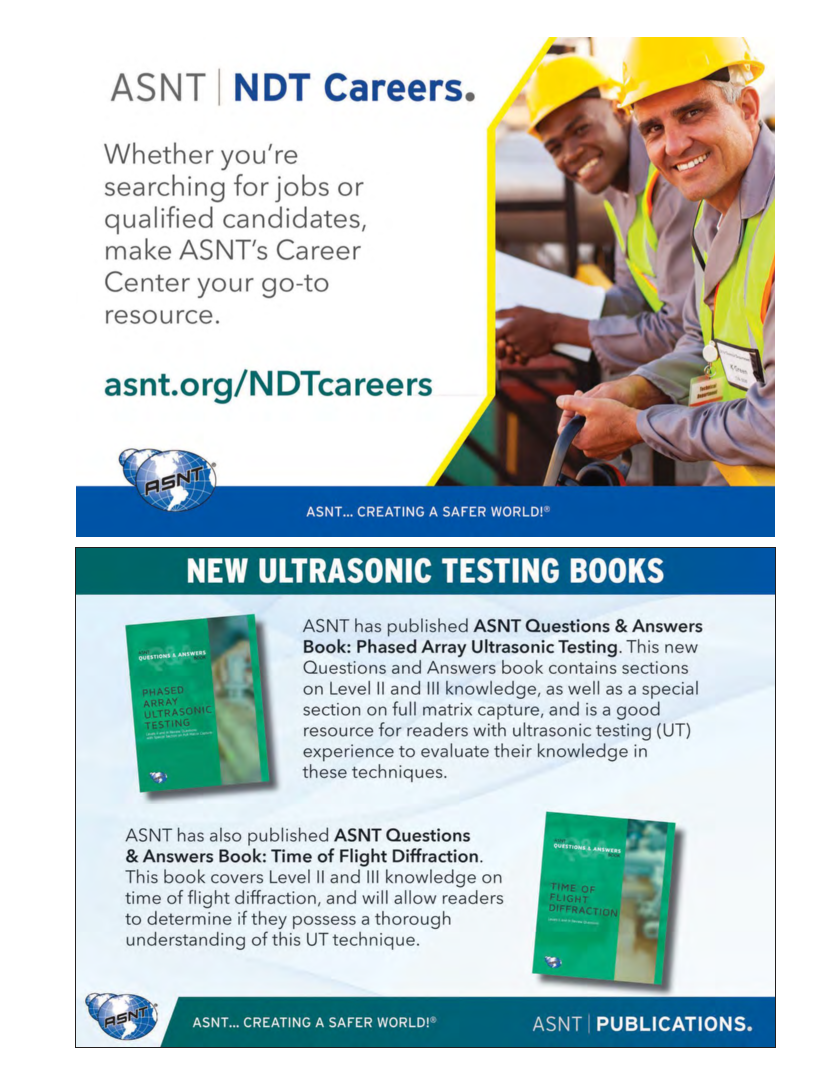JOSH DE MONBRUN CEng, ASNT NDT Level III (ET, UT, RT, VT, MT, PT) SUBSEA NDT ENGINEER, ANCHORAGE, AK FIRST OFF, WHAT IS A SUBSEA NDT ENGINEER? An NDT engineer is someone who has an engineering degree as well being a current Level III certificate holder, with many years of experience in the field. A subsea NDT engineer is someone who also has many years of experience performing work underwater, not just topside. HOW DID YOU END UP IN THIS FIELD? I was an engineering student, slated to be an Air Force pilot, when 9/11 happened. Some of us were pulled out of university to enlist right away. I hadn’t thought of an enlisted job before then and made a smart-aleck remark about accepting whichever position had the largest sign-on bonus. That happened to be NDI (nonde- structive inspection), which I did for a couple of years before transitioning as a warrant officer in the US Army. When I left the military, I completed commer- cial diver training and took a job with Oceaneering as an under- water welder and inspector. I have focused on this sector of the industry ever since—I can’t believe it’s been 20 years! WHAT’S THE BEST PART OF YOUR JOB? Besides getting paid to travel the world and play in the water?! I enjoy the consistent challenges— every project is different and provides unique opportunities to learn and produce creative solu- tions for my clients. And nowa- days, I really enjoy teaching and training our upcoming technicians and watching as they learn, prog- ress, and succeed through their own careers. WHAT ARE SOME OF THE CHALLENGES OF SUBSEA INSPECTION? Unlike most topside inspections, subsea projects are always considered a confined space situation, where you are reliant on life support equipment and the team that is supporting you on deck. After accepting that you’ll have move- ment and access restricted by the gear you’re wearing, with limited or no visibility, and some- times battling weather, extreme temperatures, tides, or current, and often being down there all alone, you are still expected to conduct a quality inspection in an effi- cient manner. This sector of NDT requires people who are willing to “put in the work.” WHAT NEW TRENDS ARE YOU SEEING? We are seeing two things happening in the industry simul- taneously: one, companies are starting to realize that commercial divers and ROV operators can no longer be a “jack of all trades” when it comes to underwater work, and require that underwater inspections be conducted by divers/operators who are qualified and certified NDT inspectors, API inspectors, engineers, and so on and two, more underwater NDT is being requested as companies are becoming more aware that the capability to perform underwater inspections using advanced tech- niques is available (such as PAUT, TOFD, ACFM, SECA, PECT, and CR/DR). HOW HAS ASNT MEMBERSHIP HELPED YOU IN YOUR CAREER? The networking and mentorship I’ve received from senior ASNT members has been overwhelming. I’ve also been afforded the oppor- tunity to become a Level III in multiple methods, serve as the chair of the Underwater NDT Committee, volunteer as the chair of the Alaska Section, and author and edit ASNT Q&A books and Level III Study Guides. I am also the technical co-editor for the upcoming fourth edition of the UT Nondestructive Testing Handbook. DO YOU HAVE A MOTTO THAT INSPIRES YOUR PROFESSIONAL OR PERSONAL LIFE? Dreams may be pleasant, but accomplishments are much more satisfying! SCOPE | ATWORK 86 M A T E R I A L S E V A L U A T I O N • A P R I L 2 0 2 2
ASNT grants non-exclusive, non-transferable license of this material to . All rights reserved. © ASNT 2025. To report unauthorized use, contact: customersupport@asnt.org





































































































